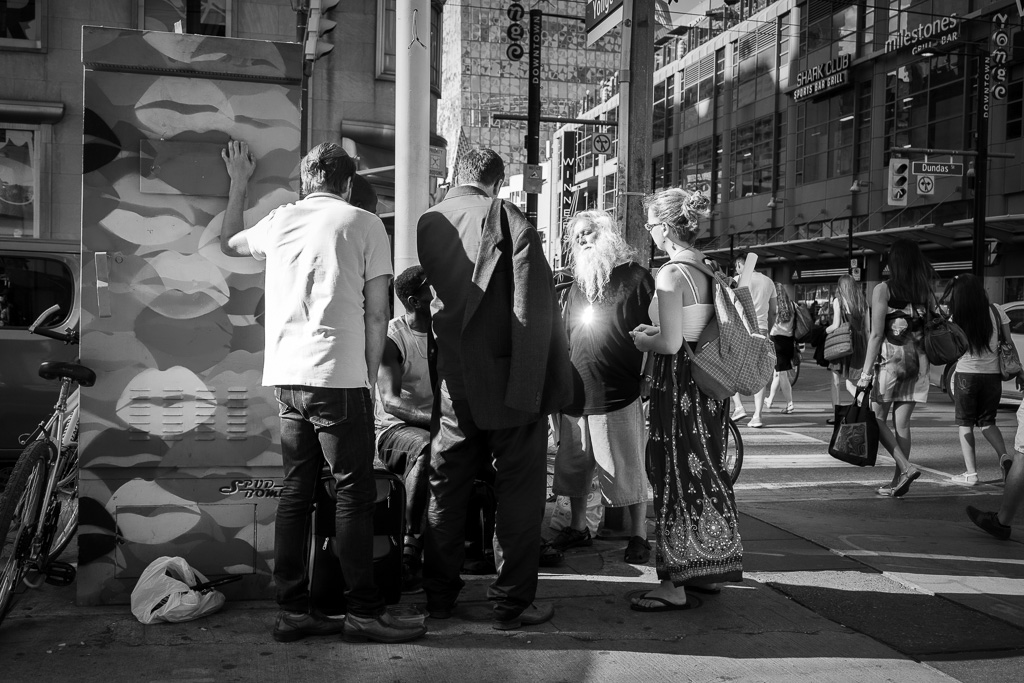I’m standing on the southwest corner of Yonge & Dundas with my eye on a street preacher. He’s older, with a shock of white hair and a Santa Claus beard that makes him look like a prophet the way people look prophetic in Cecil B. DeMille movies. He’s gathered around himself a group of young people who look on as he shares the good news. He sways a little and I shoot a burst as he’s swinging through the full range of his sway. Well that was interesting, I think, and I go on my way.
It isn’t until I get home in front of my computer screen that I realize one of my images captured a glint of sunlight reflected from the cross dangling against the prophet’s chest. If I believed in any of the man’s hoo-ha, I might take the glint of sunlight as a sign. It’s an alignment of sorts, like the alignment of Mars, Jupiter, and Saturn. Only in this case it’s the alignment of sun, flat surface of the cross, and my image sensor. Either way, it must mean something, no?
Then comes the all-important question: colour or black and white? In this instance, the answer is determined by the fact that the whole point of the image is the fiery cross. My choice will depend on which format shows up the glint to best advantage. Does colour or black and white do a better job of directing the eye to the centre of the preacher’s chest?
There are no absolute rules, of course. Every fresh photograph presents a fresh context for a decision. In this instance, colour is a distraction. It draws our attention away from the only thing that really matters in the context of this image. All of this highly subjective, of course. On another day, with my stomach rumbling after a dinner of spaghetti, I might have decided the image makes more sense as a riot of colour, signifying something else, like the vibrancy of urban living. But as it is, I had lasagna for dinner and I made my choice.
